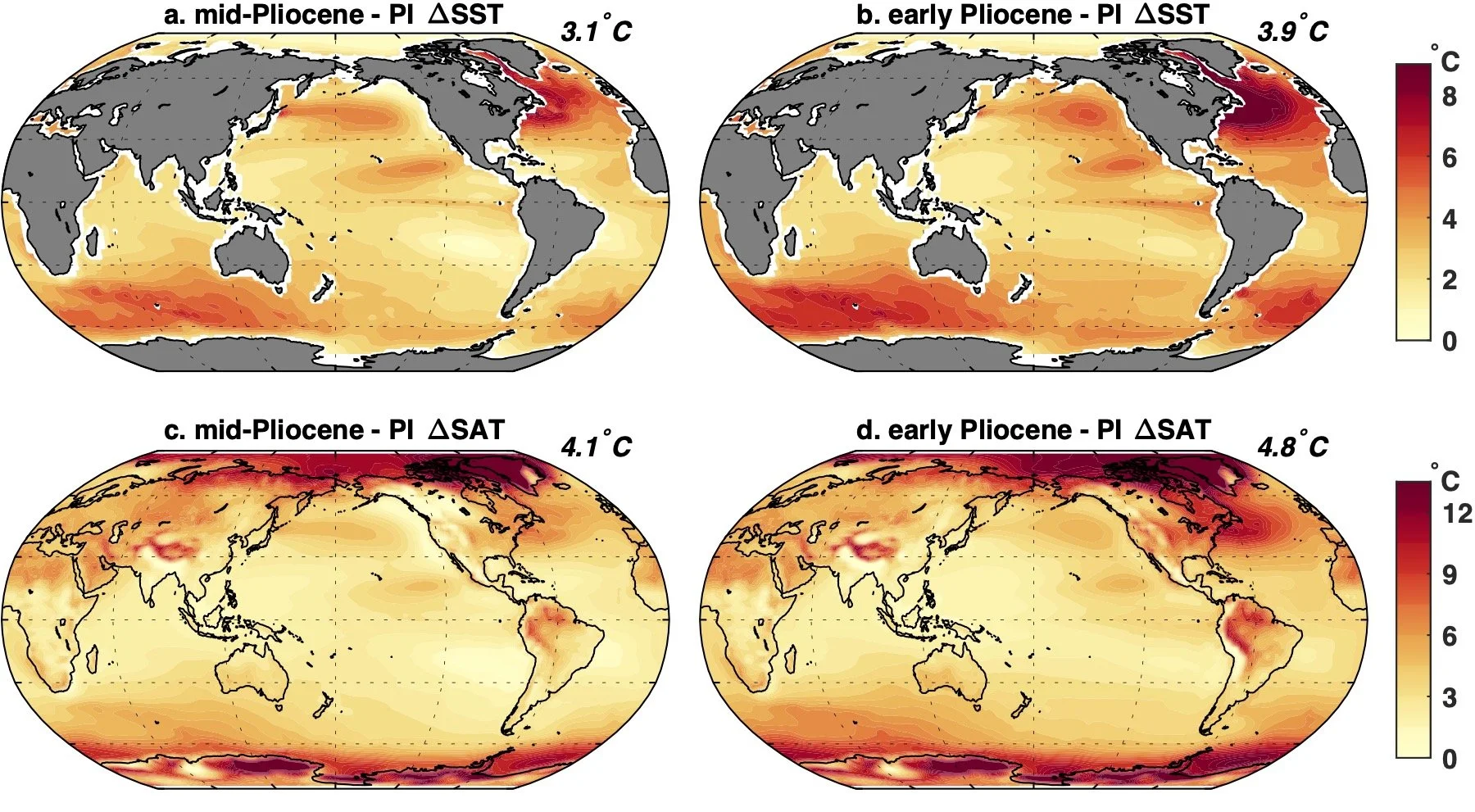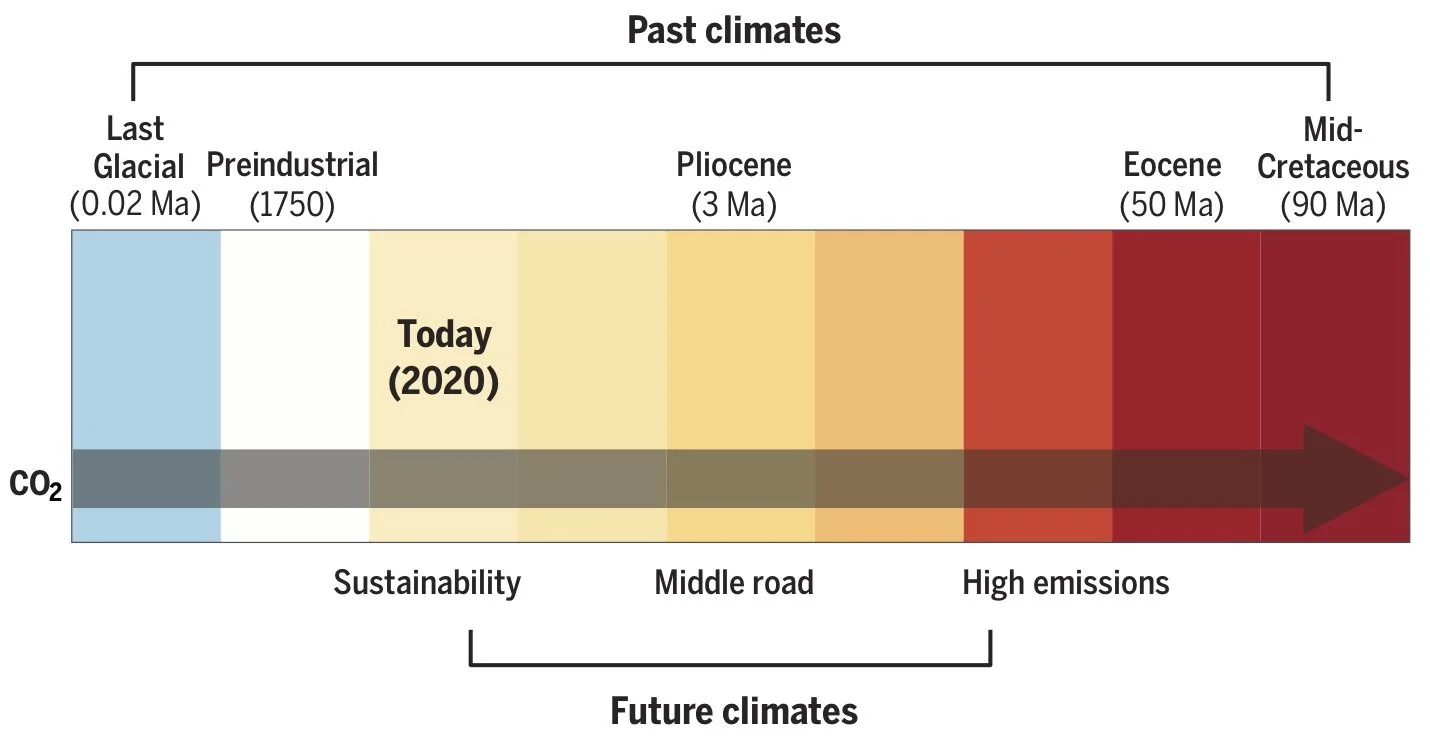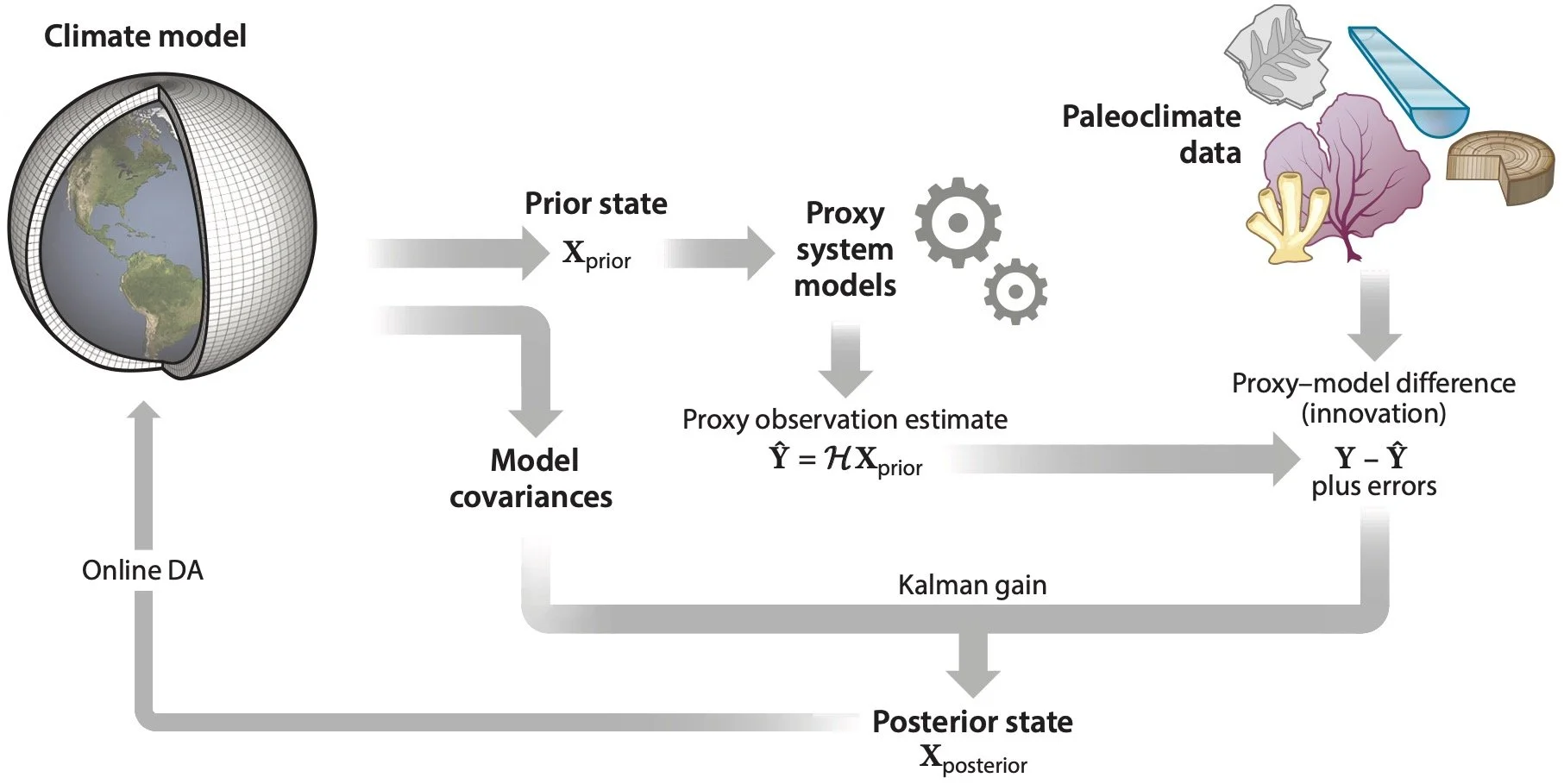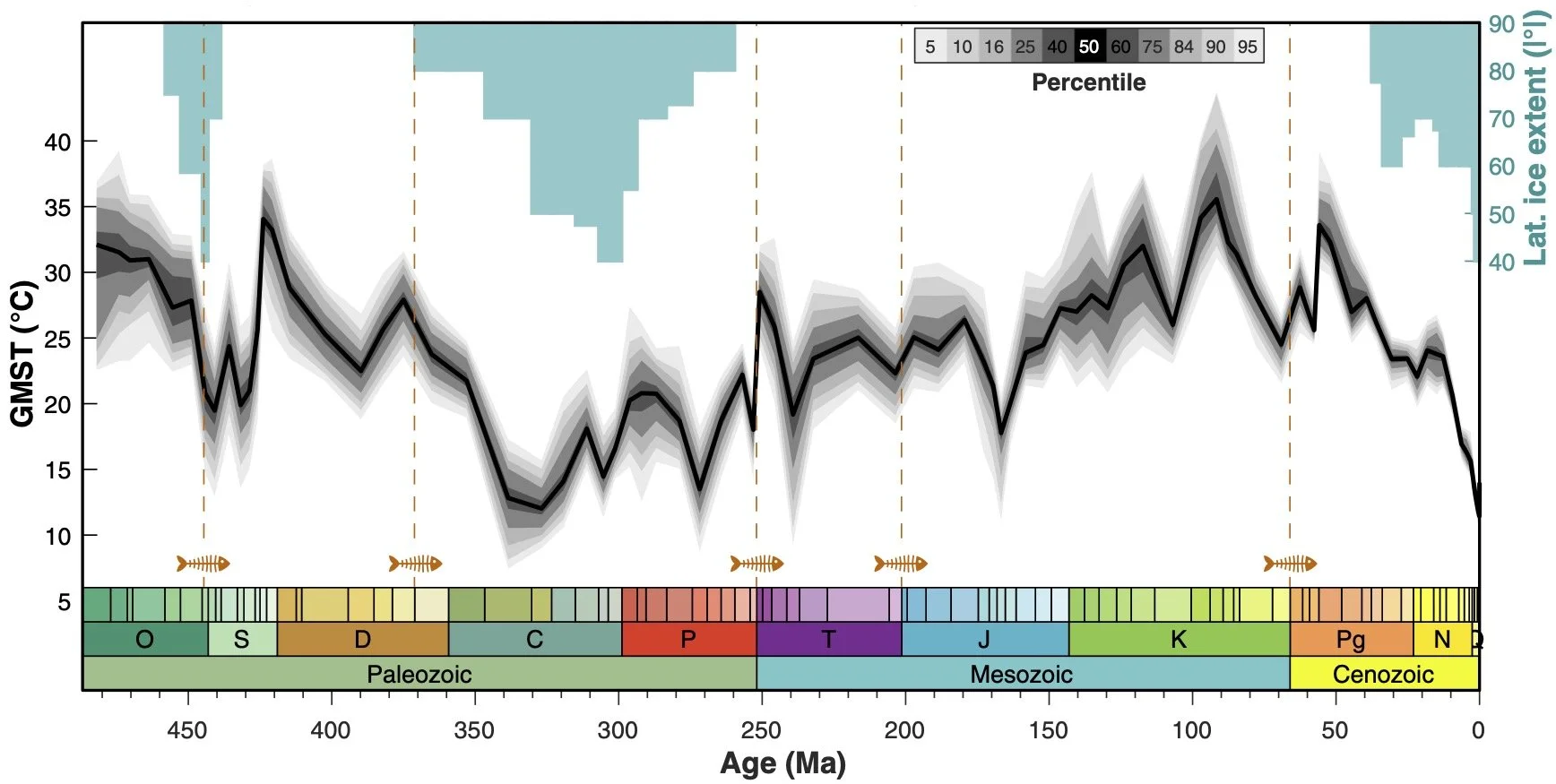My research focuses on studying past climate change (paleoclimate) in order to understand better what lies in our future, as greenhouse gas emissions rise. I use climate model output, statistical approaches, and paleoclimate data created here in our lab to piece together the history of Earth’s climate. My group specializes in the generation of organic geochemical records of past climate, derived from fossil molecules (called "biomarkers") preserved in sediments and rocks. Biomarkers produced by plants and microbes are particularly useful tools because environmental conditions like temperature and aridity are encoded in their molecular structure. We can calibrate these relationships using modern-day samples, and then apply these biomarker "proxies” to reconstruct climate deep into the Earth’s geologic past. We have also pioneered the use of statistical methods for reconstructing climate, developing Bayesian modeling techniques and paleoclimate data assimilation in order to generate spatially complete views of past climate and the dynamics behind it.
Research Highlights
Advances in Paleoclimate Data Assimilation
This review paper in Annual Review of Earth and Planetary Sciences provides an overview of paleoclimate data assimilation efforts to date and a vision for methodological advances in the future. Open Access.
Tierney, J.E., Judd, E.J., Osman, M.B., King, J.M., Truax, O.J., Steiger, N.J., Amrhein, D.E. and Anchukaitis, K.J., 2025. Advances in Paleoclimate Data Assimilation. Annual Review of Earth and Planetary Sciences, 53, 625-650.
A 485-million year history of Earth’s surface temperature
By combining over 150,000 geological proxy data with climate model simulations, we reconstructed Earth’s temperature for the past 485 million years. Our results highlight the dynamic range of Earth’s climate in the Phanerozoic, and suggest that Earth System Sensitivity lies somewhere near 8˚C per doubling of carbon dioxide. The research was covered in the popular media including The Washington Post and you can visit the temperature graph in the Smithsonian National Museum of Natural History in Washington D.C.
Judd, E.J., Tierney, J.E., Lunt, D.J., Montañez, I.P., Huber, B.T., Wing, S.L. and Valdes, P.J., 2024. A 485-million-year history of Earth’s surface temperature. Science, 385(6715), eadk3705. pdf here
Pliocene Warmth and Patterns of Climate Change Inferred From Paleoclimate Data Assimilation
In this paper in AGU Advances we used paleoclimate data assimilation to combine SST proxies and a multi-model prior to produce a spatially complete reconstruction of mid- and early Pliocene temperatures. With only ca. 375 ppm carbon dioxide, the Pliocene was 4˚C than today. Open Access.
Tierney, J.E., King, J., Osman, M.B., Abell, J.T., Burls, N.J., Erfani, E., Cooper, V.T. and Feng, R., 2025. Pliocene warmth and patterns of climate change inferred from paleoclimate data assimilation. AGU Advances, 6(1), e2024AV001356.
Past Climates Inform Our Future
This review paper is a manifesto for why studying ancient past climates is crucial for understanding future climate change. Written for a more general audience.
Tierney, J.E., Poulsen, C.J., Montañez, I.P., Bhattacharya, T., Feng, R., Ford, H.L., Hönisch, B., Inglis, G.N., Petersen, S.V., Sagoo, N. and Tabor, C.R., 2020. Past climates inform our future. Science, 370(6517), eaay3701. pdf here



